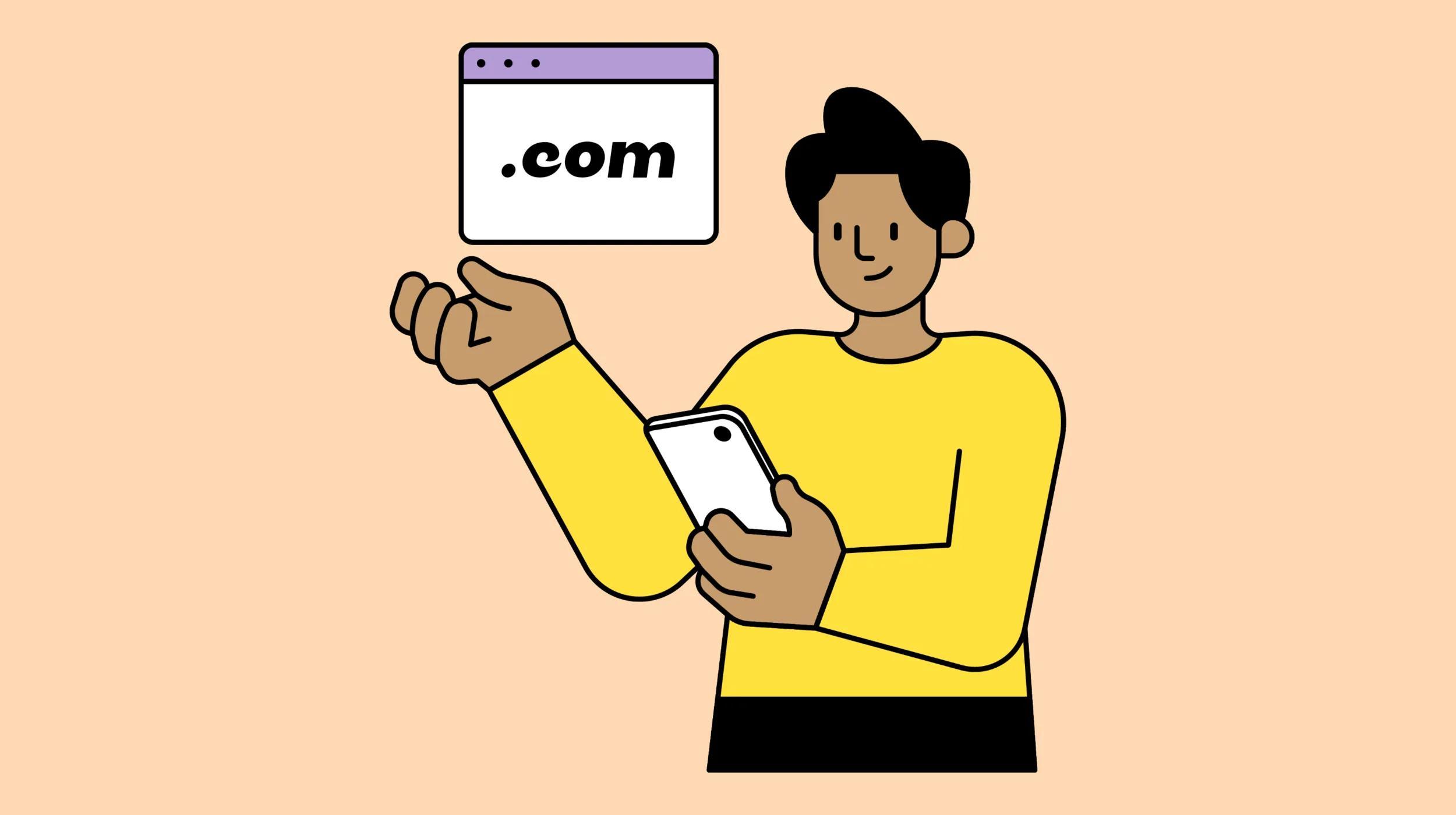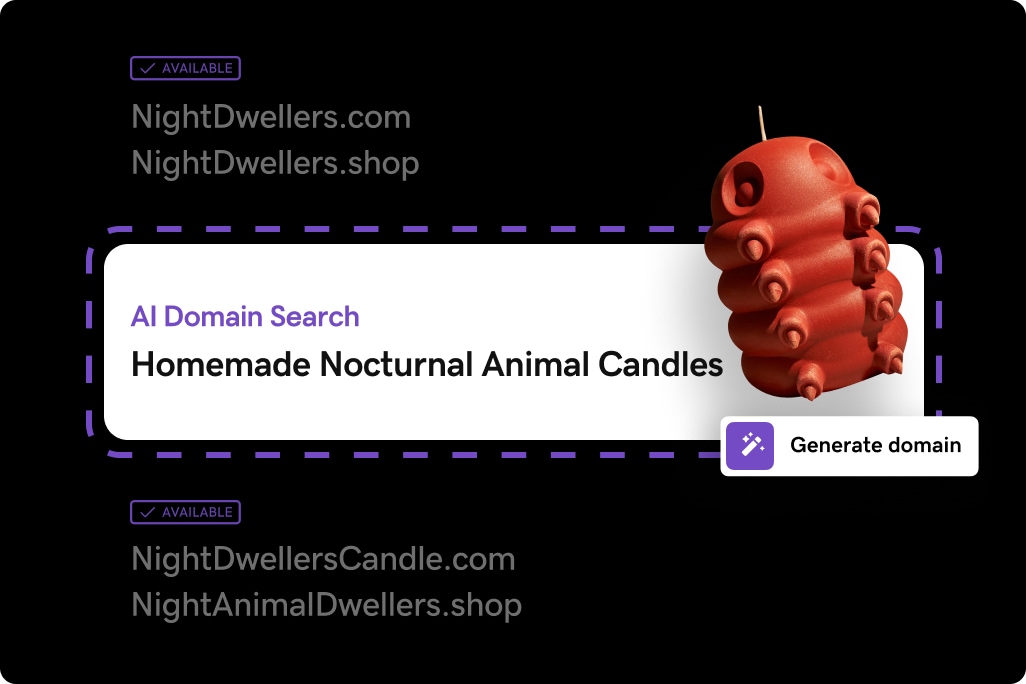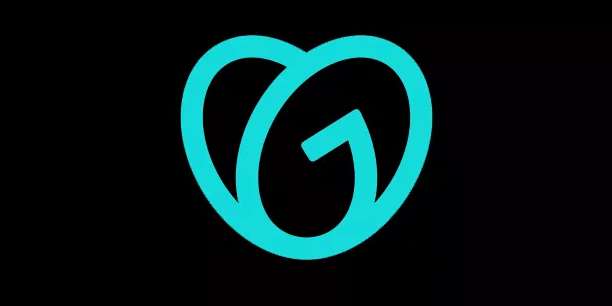Maybe you’ve been here: You’ve got an amazing-with-a-capital-A business idea and you want to buy a domain name to go with it and start a new web empire. Or something like that.
But what if your dream domain is taken? Somebody else has already registered it and, while you might see some great gTLD alternatives in the search results, you’re bummed that “your name” isn’t available. Egads! What can you do?
Where to buy a domain that’s taken
If you have your heart set on a domain that’s already registered, all hope is not lost. Choosing the right name for your business and website is key, and no one wants to settle for an alternative.
This is where the domain aftermarket comes in.
You can search the domain aftermarket directly at auctions.godaddy.com to see if your dream domain is already listed for sale there.
However, if it’s not listed there, then the next step would be to attempt to buy it directly from the current owner. When doing that, though, you’ll want to first consider your budget and timing before moving ahead.
What to do if your desired domain name is taken
Here are a few considerations you should make before embarking on your domain purchase journey.
Set your budget
Your perfect domain might seem priceless, but it’s important to be realistic. Think about both your minimum and maximum offer to be sure that you’re not under or over a realistic price.
Think about what the domain name is worth and set your budget accordingly.
Editor’s note: Need help determining the value of the domain? As the largest reseller of aftermarket domain names, GoDaddy has access to extensive data that we use to analyze millions of historical domain sales. Try GoDaddy Domain Appraisals to determine the value of the domain so you can make an educated offer.
Give yourself enough time
Buying a domain that someone else already owns takes time. It takes time to contact the owner, time to negotiate a price (if they’re willing to sell), and it’ll take more time for the domain to be moved to your account. If everything moves smoothly, you can expect the process to take a month at a minimum. But it would be a good idea to schedule in extra time to account for any unforeseen speed bumps.
Understand premium domains
When working with the domain aftermarket, you’ll likely come across domains listed as premium domains. If the domain name you’ve had your eye on falls into this category, it’s a good idea to know what you’re looking at.
Premium domains are high-quality domain names that provide advantages for both SEO and branding. They’re usually short and memorable, which makes them ideal for establishing yourself online.
Check for trademarks
It’s a good idea to run your desired name through a trademark check before starting the offer process. Bidding on and buying a domain that has ties to a trademark could turn out to be a waste of time if you’re not able to actually use the domain once you have it.
Use AI to find alternative domain names
If all else fails and you can’t nail down your dream domain, using an AI domain name generator can help you find the next best thing.
Some domain options that AI can create include:
- Unique, brandable names
- Two-word combo domains
- Portmanteaus
- Alternate spellings
How to buy a domain name that is taken in 4 steps
Now that we’ve covered the basics on what to consider before trying to buy a domain that someone else owns, let’s go over the steps you’ll need to take once you’re ready to move forward. Those steps are:
- Find out who owns your dream domain.
- Get contact info for the decision maker.
- Start negotiating.
- Pay for and transfer ownership of the domain.
These steps are the basic outline, and your particular situation may vary, but this framework should help even novice domain name buyers navigate the process.
1. Find out who owns your dream domain
The first step in buying a domain someone else owns is finding out who the other person is. You can do this by using WHOIS. This is like the white pages of a phone book. Many times, the name, email, and phone number of the person who owns the domain name are listed there. It’s important to check the domain ownership history, so you can see any potential threats or opportunities.
There are times, however, when the person uses a privacy service or the information is out of date. Privacy on the WHOIS acts like an unlisted phone number; it adds other information to the WHOIS to guard the owner’s personal information. The privacy email information almost always forwards to the real owner’s email address, so it is still possible to try and contact them through the private email listed in the WHOIS directory.
European domain customers have an additional layer of security available via the General Data Protection Regulation (GDPR). This regulation allows domain owners to remain more or less anonymous on the WHOIS. You can still contact them if they have their domain name registered with GoDaddy by scrolling to the bottom of our WHOIS lookup and choosing the option to "Contact Domain Holder."
2. Get contact info for the decision maker
Once you have the email contact, do some basic research to learn more about the domain’s current owner. You want to get in touch with a decision maker. Chances are, if you email a company’s website administrator, they will ignore you.
You’ll have better luck if you can get in touch with the business owner or a domain investor.
If you can only find the general email box of a medium or large-sized company, dig around some more for ways to contact the company's decision-maker about the domain.
3. Start negotiating
Now the fun part begins: negotiation. Negotiation is an art and a science. Industry expert Braden Pollock offers up one great piece of domain negotiation advice: “He who names a price first loses.” It is always better to start out asking if the name is for sale and, if so, what the seller would consider letting it go for.
4. Pay for and transfer ownership of the domain
Next, you’ll need to pay for the domain and transfer its ownership. I cannot stress enough the importance of using a third party to facilitate this process. You want to feel protected when you are paying for the domain, and actually walk away with the domain you worked so hard to obtain. The seller wants to know that they can trust your payment.
GoDaddy offers a trusted aftermarket platform for transacting domain name sales. You can also use alternative services such as Escrow.com, which hold the money until the name is accepted and confirmed to be in the buyer’s account, and clear the funds for the seller prior to authorizing the movement of the domain to the buyer.
Ready to buy a domain?
As with anything else in business, getting started is often the hardest part. But now that you know how, I encourage you to jump into buying the domain you always wanted. Even a “no” from the current owner doesn’t mean you have to give up; situations change, so it’s always a good idea to check back in from time to time to let your dream domain’s owner know you’re still interested.
Want an expert to handle it for you? If all this domain aftermarket stuff sounds too complex or if you just don’t have the time to deal with it, consider turning to a professional service like GoDaddy’s Domain Broker Service. A broker will contact the domain’s current owner and negotiate for the domain on your behalf. Done and done. Learn more about what to expect when working with a domain broker.










